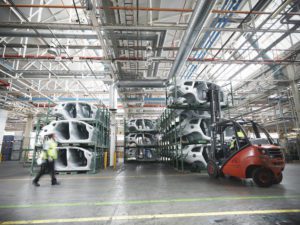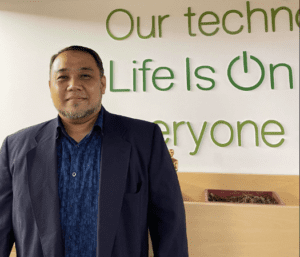Since the dawn of the IT age, the world of information technology has existed separately from the world of operational technology (OT).
Now, a tectonic shift is bringing those two worlds together. IT/OT convergence is upon us, and the resulting culture clash is challenging leaders of all kinds to unite the two.
The opportunities of this IT/OT converged “Pangea” are immense. Combining the physical infrastructure of your business with digital intelligence is the key that unlocks business efficiencies, predictive maintenance, just-in-time ordering, and many more promising use cases. But challenges exist, too. Top threats include cyber risk, culture clashes between IT and OT teams, budget control, and other implementation roadblocks.
As a Solution Architect at Schneider Electric™, I help organizations of all kinds design solutions that bridge the IT/OT divide. Based on many conversations, I’d love to share some of the best ideas I’ve come across. Three powerful minds joined us at Innovation Summit Las Vegas to share their own expertise: Grant Geyer, Chief Product Officer of Claroty; Ed Soo Hoo, WW CTO of Global Accounts at Lenovo; and Craig Resnick, ARC Advisory Group Primary Analyst.
3 Ways to Conquer IT/OT Convergence Challenges
In this conversation, we discussed three best practices on advancing cultural change to ensure IT/OT convergence is successful.
1. Tie together IT and OT conversations through the topic of digital risk.
Claroty’s Chief Product Officer, Grant Geyer, was spot on in pointing out that the “soft underbelly” of digital transformation is digital risk. While OT stakeholders may have been reluctant to embrace digital transformation at first, the benefits are just too great now not to embrace it. As Grant explained, bridging the great divide in the area of security, for instance, requires an understanding that the principles of IT security and OT security are the same thing; it’s how you implement them that needs planning based upon the parameters of digital risk. What are the safety issues? What are the resilience issues? He recommended using shared conversations about risk to narrow the historical gap between IT and OT stakeholders.
In short, the language of risk serves as an effective red thread for bringing IT and OT stakeholders to the same table to cultivate a mutual understanding of IT/OT convergence. In these conversations, it’s imperative that cybersecurity and digital transformation go hand in hand and are prioritized accordingly within a holistic digital risk framework. In fact, a two-way discussion no longer is just optional given that risk, including cyber risk, spans both worlds. No company can afford what Grant called a “clash of cultures.”
2. Break down silos to bring together IT teams and OT teams.
We’re all working through a similar journey. Lenovo’s WW CTO of Global Accounts, Ed Soo Hoo, pointed out that the common denominator is helping teams comes together. I loved hearing Ed say that there is no lack of technology for accelerating IT/OT convergence. Instead, it’s more about helping people get through a cultural shift, adopt a new mindset, and enact shared discipline to support the transformation. This was a critical insight for our audience to hear, as a live poll during the session revealed that 3 out of 4 attendees were either about to start their journey or were well on their way.
Everyone on the panel agreed that the desire to bridge connectivity is there, especially to ensure that valuable data can be exchanged between the networks as needed to optimize productivity, profitability, and uptime. Real-time data from the convergence of IT and OT allows all stakeholders to make the best decisions possible, whenever needed. But even if the desire is there, it won’t happen magically on its own. That’s why teams need to come together, and leaders must make that happen.
3. Be purposeful about a strategic plan to drive IT and OT convergence.
Here’s an insight from an industry analyst who has witnessed this transformation since the early years of Ethernet on the shop floor. ARC Advisory Group Primary Analyst Craig Resnick has seen the entire continuum — from early adopters to companies facing “accidental convergence” after the pandemic. Craig gave us all the astute advice to be purposeful about the end-state of digital transformation by starting with a design or plan. Doing so helps everyone understand how they can operate and drive efficiencies within parameters that the organization has clearly mapped out.
This deliberate approach can empower the organization to advance transformation but from a risk-management perspective, as Grant pointed out. Ed summed up this thread nicely when he quoted Dwight D. Eisenhower, “Plans are useless, but planning is indispensable,” emphasizing the importance of collaboration and communication distilled down to common phrases around how to balance speed, cost, quality, carbon, people, and risk.
Lead IT/OT convergence.
I agree with Ed that one of the hardest things to do is enact that change management. Processes can be changed easily, people … much harder. It’s really about a leader who says, “Hey, IT and OT, we need to come together … and here is why.” It sounds simple, but in practice, it’s not easy. To make IT/OT convergence successful, a leader must get into the hearts and minds of both communities because every organization really needs these two teams working together. And stories from these three leaders offer inspiration to us all. Onward!
For more inspiration, and to hear a success story about how a factory built in 1958 become one of the most advanced in the world via successful IT/OT convergence, check out this case study.



